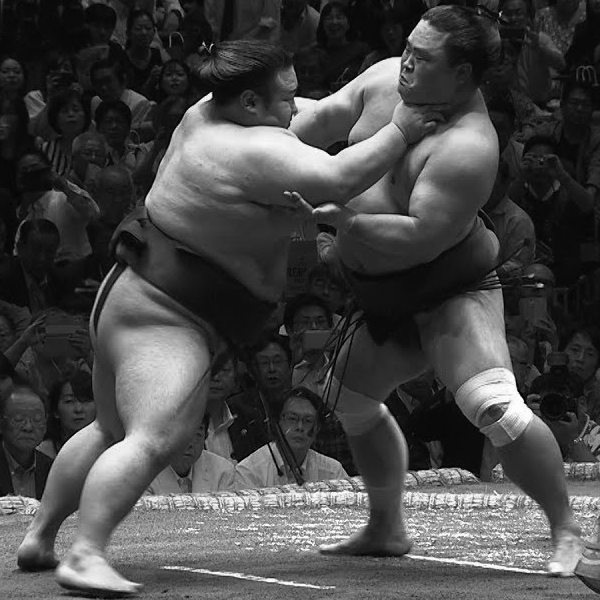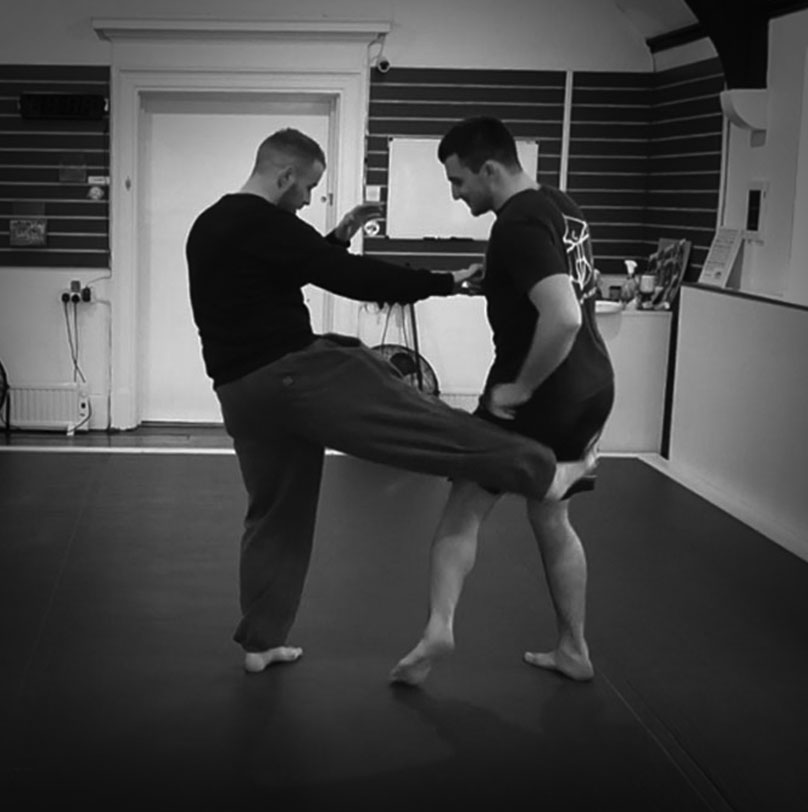In a previous article we looked at the subject of passive and active power. These two types of power can be used to define the ways in which martial artists interact and are helpful when examining the context in which our body method is used. Here we will examine the subject of active power in more depth in order to understand how Active and Passive are essentially two parts of the same coin.
The basis of active power.
It is important to realise that active power isn’t actually different from Passive power in the way that we produce it. It is entirely dependent on correct and appropriate body method. However, it is very common for us to focus on the effect that active power has on the opponent, rather than the way in which it is produced. As such we can become overly interested in the effects, throwing an opponent or knocking them out for instance rather than the ways in which those effects are formed.
 The basis of active power is to be found in the use of the body. A karate practitioner will use a specific way of moving their body in order to produce the power for their kicks or their punches, this is true of all martial arts. So, it stands to reason that to improve our active power and the effects that active power has on an opponent, we should initially focus on the methods by which we develop our body.
The basis of active power is to be found in the use of the body. A karate practitioner will use a specific way of moving their body in order to produce the power for their kicks or their punches, this is true of all martial arts. So, it stands to reason that to improve our active power and the effects that active power has on an opponent, we should initially focus on the methods by which we develop our body.
It is in this development of body method that we see the crossover between active and passive power methods. The way in which we use our body may be exactly the same, however it is in the application of the same body method that the differentiation can be found. Imagine a martial artist in zero gravity in the middle of space with no reference of up down left or right. That martial artist performing a movement would look exactly the same in the active or passive method. They would be moving without context. And it is in context that the active and passive distinction arises. The context of our environment and our opponents, and how we move in relation to them.
So it would be fair to say that the body development of the active or passive method can be identical and there is no need for us to create special techniques or training methods to develop our body differently in each example. But we should be striving to develop our ability to move through our environment and in association with the partner, to create the differentiation between active and passive.
Creating active power.
So as we have established active power is in fact the use of the body in relation to the environment and the opponent. To create active power we utilise our body method while attempting to actively engage with our opponent. It is to be found in the advancing and the retreating, the active attempt to control, to strike, or to throw. As mentioned previously, active power can be thought of as the ball rolling over someone rather than the ball spinning in place, the ball remains the same the context of its spin is the differentiation.
 Now, in most martial arts Active power is not considered in any great depth. The focus instead lands on the opponent, where we are trying to enact something or create some result in them. This external focus is a commonality in the martial arts, and, in fact, all martial arts must consider it. We must know what is going on ‘out there’ in order to be able to deal with it.
Now, in most martial arts Active power is not considered in any great depth. The focus instead lands on the opponent, where we are trying to enact something or create some result in them. This external focus is a commonality in the martial arts, and, in fact, all martial arts must consider it. We must know what is going on ‘out there’ in order to be able to deal with it.
However, Some martial arts also deeply consider what is going on with the body and mind, from one moment to the next. The way in which we use the body to create the effects in the opponents. This slight difference of focus, while still intimately connected with the situation externally is one of the ways in which Active power can closely relate to the development of our body. Of course, in the heat of the encounter, we may not actually be thinking about using the correct body method. This should just arise! But in training this should absolutely be a consideration.
The process of developing the body so that it is capable of acting as required is different depending on the various strategies of the art. The Silat adept may want to develop a different focus to the Taiji adept, the MMA fighter develops differently to the Muay Thai fighter, and so on. But it is fair to say that some mix of the MartialBodies will be present. Understanding that mix, and where to place your energy can transform your fighting skill, as your body develops, so your active power develops and your ability to use it develops.
Differentiating the Active Power requirements.
So taking the body method out of the equation as a differentiator, we are left with the methods and means of actively engaging the opponent or partner. These are the techniques that will allow us to obtain an advantage in a fight, and are predicated on the development of a few specific qualities and ideas.
 Firstly we have the development of our neurology. This could be framed within the more simple terms of our reaction times, speed and agility, The domain of the ElasticBody. In order to actively utilise our body we must be able to use it at the right time, with the right level of speed, at the right tempo, and into the right opportunities. You could have the hardest punch in the world, but if you cant land it on someone because of your timing or reaction speed, it is useless. And so we must work hard to create the mind/body connection to be able to act and react in accordance with the ever changing conditions of the encounter. This is the first area of focus for the practitioner interested in the development of active power.
Firstly we have the development of our neurology. This could be framed within the more simple terms of our reaction times, speed and agility, The domain of the ElasticBody. In order to actively utilise our body we must be able to use it at the right time, with the right level of speed, at the right tempo, and into the right opportunities. You could have the hardest punch in the world, but if you cant land it on someone because of your timing or reaction speed, it is useless. And so we must work hard to create the mind/body connection to be able to act and react in accordance with the ever changing conditions of the encounter. This is the first area of focus for the practitioner interested in the development of active power.
Next we have the development of the tools to deploy our sharp neurology. These tools represent the mobility of our bodies, how we are able to step, move, roll or flow. It is easy to say deployment is just another part of our other body method training, but without special focus, it can become disjointed from our action and reactions. Again, we may have the best footwork in the world, but if our timing is off we still get hit. And so a seamless link between our movement and our mind must be formed, getting us closer to the flow that exemplifies Active power – This link is the domain of the FluidBody.
Finally we have an innate ability to ‘change’. This is something of a diffuse term, but relates to our ability to adjust our active approach from moment to movement as the encounter progresses. Active power is reliant on this ability as much as any other. If we are to effectively use our power to control or disable our opponent, we must be prepared to alter course naturally and instinctively as the conditions change.
Active power should not be considered a blunt instrument. Instead it is a combination of powerful body method, acute action/reaction skills, skillful deployment of our body method and flexibility to enact change.